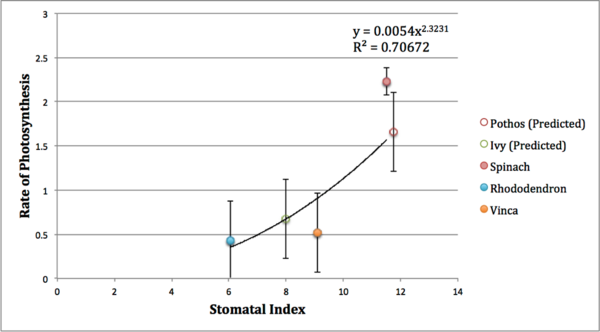The Effect of the Stomatal Index on the Net Rate of Photosynthesis in the Leaves of Spinacia oleracea, Vinca minor, Rhododendron spp, Epipremnum aureum, and Hedera spp
(1) Belmont High School, Belmont, Massachusetts
https://doi.org/10.59720/15-005
Climate change, caused by global warming and an increase in atmospheric CO2 concentration, poses significant challenges to plant life in a rapidly changing environment. To be able to survive in a changing environment, plants must learn to adapt (1). The stomatal indexes, or density of stomata relative to the epidermal cell count, of plants are inversely correlated to paleo-atmospheric CO2 concentration and present day CO2 concentration (2) as a species-specific adaptation resulting from not only genetics but also environmental pressures (3). In order to understand the effects that rising CO2 levels will have on the photosynthetic rate of plants in the coming decades we need to research how plants adapt through stomatal indexes to maximize photosynthesis. This study investigated the effect of the stomatal indexes of five different plant species on their derived net rate of photosynthesis. Leaf disks from the plant species were placed in a vacuum, so that bicarbonate solution would enter the disks and provide the carbon for photosynthesis. As photosynthesis proceeded, the leaf disks floated due to oxygen accumulation. The effective time for the disks to rise was used to derive the net rate of photosynthesis. We found a correlation (R2=0.5625) between the stomatal index and photosynthesis, and that a higher stomatal index correlates to a higher rate of photosynthesis in a non-water stressed environment. The results could be used to further study how environmental changes due to climate change influence the stomatal index and thereby the net rate of photosynthesis of plants.
This article has been tagged with: